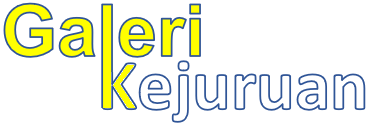Asking Questions and Eliciting
Lead In
The most important key to create an interactive language classroom in the initiation interaction by teacher. Teacher need to be able to stimulate these interaction. One of the best way to develop teacher’s role as an initiator a repertoire of questioning strategies (Brown, 2001, p.169). In some classrooms over half of class time is taken up with question-and-answer exchanges. Researchers who have examined the contribution of teachers’ questions to classroom second language learning state that questions play a crucial role in language acquisition. They mention that questions can be used to allow the learner to keep participating in the discourse and even modify it so that the language used become more comprehensible and personally relevant ( Richard and Lockhart, 2004, p. 185).The discussion in activity 4 mainly focuses on teacher strategies in asking questions to their students so that they will have opportunity to use English.
Reason for Questioning
Ur (2006 p. 229) reveals that there are various reasons why a teacher might ask a question in the calssroom. Here is some reasons why a teacher ask questions.
a. To provide a model for language or thinking.
b. To find out something from the learners (facts, ideas, opinions)
c. To check or test understanding, knowledge or skill.
d. To get lerners to be active in their learning.
e. To direct attention to the topic being learned
f. To inform the class via the answers of the stronger learners rather than through the teacher’s input.
g. To provide weaker learners with an opportunity to participate.
h. To stimulate thnking (logical, reflective or imaginative); to probe more deeply into issues.
i. To get learners to review and practice previously learnt material.
j. To encourage self-expression.
k. To communicate to earners that the teacher is genuinely interested in what they think
There have been many ways to identify characteristics of effective questioning technique in the classroom. Brown (2001, p. 169 -170) states that appropriate questioning in an interactive classroom can fullfill a number of different function:
- Teacher questions give students opportunities to produce language comfortably wthout having to risk initiating language themselves.
- Teacher question can serve to initiate a chain reaction of student interaction among themselves.
- Teacher questions give the an immediate feedback about student comprehension, because after posing a question, a teacher can use the student response to diagnose linguistic or content difficulties.
- Teacher questions provide students with opportunities to find out what they think by hearing what they say.
Question as a teaching strategy
Richards and Lockhard (2004, p.187) mention that because of the importance of questioning as a teaching strategy, the skill with which teachers use questions has received a considerable amount of attention in teacher education. They reveal some issues that have been identified for that need:
a. The range of question types teacher use
The discussion on this issue will involve the three kinds of questions:
1) Procedural questions. This question relates to classroom procedure and routine as well as classroom management, for example:
”Did everyone bring their homework?”
”Do you all understand what I want you to do?” ”disd anyone bring a dictionary to class?”
2) Convergent question. This question encourage similar student responses as it is sometimes focus on a central theme. Teacher usually uses such questions for leading into a particular topic of reading, for example:
’How many of you have apersonal computer at home?”
What are some other machines that you have in your home?”
3) Divergent question. This question encourages diverse student response and require students to engage in higher-level of thinking, for example:
’How have computers had an educational impact on society?”
Do you think computers have had any negative effects on society?”
Considering those three type question, a research reveals that teachers tend to ask more convergent than divergent questions. It means that teachers tend to ask question for recalling of information rather than to generate student ideas and classroom communication.
b. Student participation
In many classroom, students have few opportunities to ask questions on their own, although they may be given the opportunity to answer question
c. Wait – time
Wait time is the length of time the teacher waits after asking the question before calling on a student to answer it, rephrasing the question, directing the question to another student or giving answer. Teachers often use a very short wait-time, which is rarely sufficient to enable students to respond.
What is eliciting? What make it so important in language learning? Now read the following article from www.teachingenglish.org.uk about eliciting and share your opinion or your experience about it.

